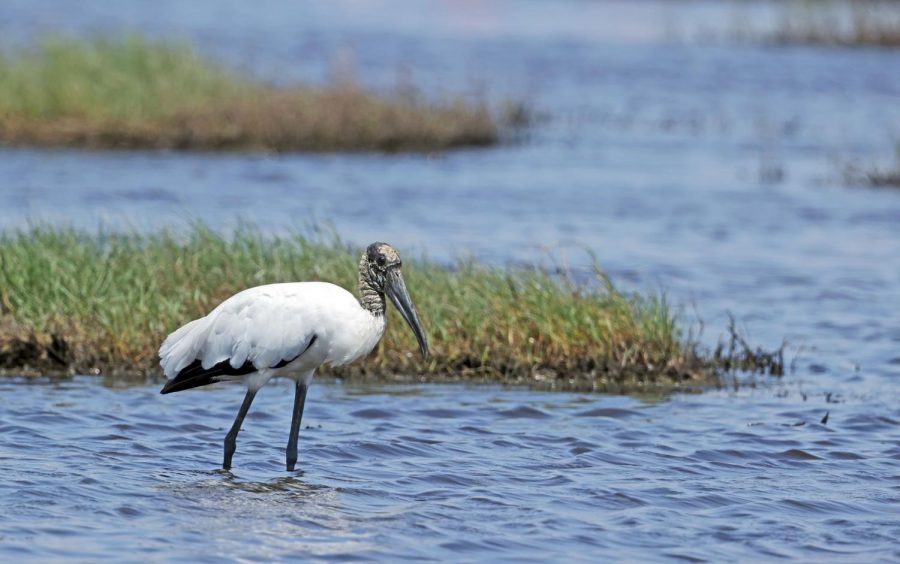Brain-eating amoeba appears in Texas waters, contaminates Lake Jackson water supply
Lake Jackson’s water supply is. now contaminated by a brain-eating amoeba, which can be deadly if it enters the nasal passage. Lake Jackson is located on the outskirts of Houston in Brazoria County.
In early September, six-year-old Josiah McIntyre was hospitalized after contracting the parasite Naegleria fowleri in Lake Jackson, Texas. The amoeba had contaminated the water supply in the surrounding Houston area where McIntyre lived. It wasn’t until McIntyre’s death on Sept. 8 that officials were prompted to investigate the Brazosport Water Authority System, where they found that N. fowleri had tainted the water systems of Brazoria County.
Lake Jackson authorities and The Texas Commission on Environmental Quality enacted a boil advisory to prevent any more infections. Texas Gov. Greg Abbott declared a disaster declaration in Brazoria County. It is unknown where exactly McIntyre contracted the amoeba, but it is suspected he inhaled infected water at a splash-pad where his family visited.
Officials suggest disinfecting the water supply could take months, and many citizens are worried for their health. This is an extremely rare occurrence, and not many people are aware of amoeba and their prevalence in Texas.
Amoebas are protozoan, eukaryotic microorganisms. Utilizing their pseudopods, or fake feet, they move and engulf other organisms they come into contact with.
Dr. Daniel Gold is an assistant professor of biological sciences and a molecular parasitologist with an interest in protists at St. Edward’s.
“[Amoeba are] basically like a microbial hunter,” Gold says. “They’re kind of like the blob…you could say, they go around…and wind up eating organisms like…yeast, bacteria, [and] other protozoa.”
The brain-eating amoeba N. fowleri, exists at the bottom of warm bodies of water in trophozoite (infective) or cyst (hibernative) states. They are usually kicked up from the bottom of the water and enter the nasal cavity of a host, crossing the barrier of cells in our nose into the nervous system and eventually to the brain.
“The brain [allows] free grazing for the amoeba,” Gold says. It’s important to emphasize that amoebas are not prokaryotes like bacteria, but eukaryotes. Along with its rarity and non-distinct symptoms, treatment of infections are difficult because it is hard to differentiate between amoebas and human eukaryotic cells.
Yet, Dr. Gold ensures that amoebas “[are] not all so harmful. In fact, relatively few are very harmful.” Amoebae are prevalent in warm freshwater, and global warming has caused an increased prevalence due to rising temperatures.
“If you drink…[contaminated] water, you’re fine. We can digest [N. fowleri], it can’t survive our stomach acid. [But], if it gets into the nose, that’s when it can become problematic,” Gold says. It is a rare occurrence, but when it does happen it becomes sensationalized due to the 97% mortality rate.
Water filtration systems usually eliminate parasites, but massive amounts of rain can overwhelm the systems, which put filtration to a halt and allow much more dangerous parasites into the water supply. Gold says parasites like Cryptosporidium and Giardia are more common and pose a bigger threat than N. fowleri.
In October 2018, due to silt and debris caused by heavy rain, officials issued a city-wide boil notice in an attempt to prevent the presence of parasites like N. fowleri and other pathogens in Austin’s tap water.
There are precautions you can take in order to protect yourself from the amoeba. N. fowleri is only dangerous if it enters the body through the nasal passageway. Bringing nose clips when swimming in lakes can help guarantee that water does not get into your nose. Gold ensures that this brain-eating amoeba is the least of our worries and is easily avoidable.
For more updates on the situation in Brazoria County, visit the Texas Commission on Environmental Quality website.












